#especially when it comes to 1920s cinema
Text
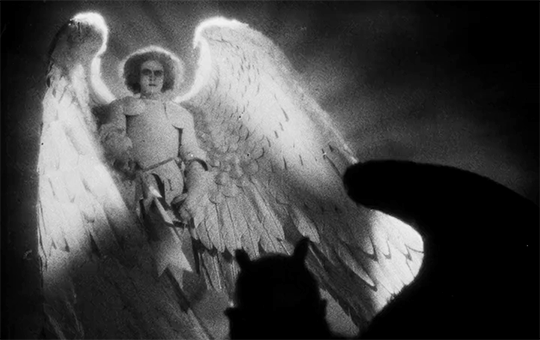





Every Film I Watch In 2023:
151. Faust (1926)
#faust#faust (1926)#2023filmgifs#my gifs#loved the start of that#hated the middle bit#really astonished by the ending#oh murnau#how i love your lighting and loathe your plotting#still mostly convinced cinema peaked with German Expressionism#at least when it comes to gorgeous visuals and atmospherics#not so much the racialised imagery and godawful melodrama#but hey you can't have everything#especially when it comes to 1920s cinema#also was Fantasia hugely inspired by this#cos i was getting so much Fantasia vibes from the start#and how deliciously MR James is that third gif#i love it so much
34 notes
·
View notes
Note
one of my fav fun facts about alfred is that he's described to be a bit of a film buff. do you think that only refers to his own hollywood movies or is he an appreciator of foreign indie films too? your hetalia headcanons/drabbles are so interesting btw, i love them!
thank you anon! when it comes to this, i generally lean towards alfred embodying the more well-travelled and cosmopolitan side of america, so i'd say he definitely appreciates all sorts of foreign films too. he might enjoy some hollywood cliches a little too much lol, but there's hollywood has long been influenced by foreign cinema to begin with.
this is one thing i see him and kiku often doing together, actually. specifically because japanese cinema and culture has a pretty significant influence on hollywood. for example; akira kurosawa's postwar films, like the incredibly influential Seven Samurai— which is what the 60s western Magnificent Seven is directly based off. as well as his The Hidden Fortress, which Lucas took inspiration from for the original Star Wars. and there's also ofc godzilla, the mecha genre, and other films like the Matrix and the original Ghost in the Shell manga.
i also see Alfred being fluent in spanish (especially due to the influence of his neighbours) and german by the 1900s, so that also made it much easier for him to appreciate a lot of older foreign films in their original languages without any dubbing. so the 1920s german film Metropolis and its dystopian sci fi themes—he's watched that too, besides english-language british films. and since alfred generally enjoys action films, he's watched many hong kong martial arts films and crime thrillers too. there's also the fact that alfred himself can be rather a showman who revels in the flair of a performance, so he finds the dynamic dance choreography of bollywood films appealing too. there're many more films he enjoys, and i think he finds it interesting to watch foreign films both for their aesthetics and different cultural perspectives, the same way he enjoys reading widely and meeting new people. so yes, i'd see alfred as that film buff who enjoys world cinema.
54 notes
·
View notes
Text
Having just completed the barbenheimer double bill I have some initial thoughts
The first is that the experience is peak cinema. The rest are mildly spoilery so they're below the cut.
My near immediate thoughts on Oppenheimer is that alot of my almost critisms are kinda muted (for lack of a better word) by the fact the film was called Oppenheimer. It didn't delve nearly as much into the more board strokes of the Manhattan project (like Los Alamos itself, or the bombings, or the people who suffered and died due to the three bombs he directly oversaw, or the long term impact of mass nuclear proliferation) but also... The film wasn't called the Manhattan Project, or Los Alamos, or Trinity, or Little boy and Fat man, or Nuclear Fallout or any other number of titles that would indicate a focus on the nuclear aspect of the second world war. It's Oppenheimer, a complicated biopic about a complicated man that begins some time in the 1920s and ends some time in the 1960s and is alot more about the man than the war he "won".
Not that this renders the movie free from criticisms on that front. Honestly I feel the movie is maybe too gentle on the man and his apocalyptic body count, and is probably not as strongly anti-war as the movie thinks it is, especially without any examination of whether Japan would have surrendered without the bombs. Plus the additional angle of "making a biopic about Oppenheimer that glosses over the real people his invention hurt" is, while a choice that makes sense on paper for the sake of keeping the movie right and focused, does take away the weight of what he did.
Then again, as a friend pointed out, having the only presence of Japanese people in the movie be nuclear irradiated corpses would be in poor taste at best and probably qualifies as exploitative at minimum. Plus, as Truman (or at least, Oppenheimer's Truman) points out, Oppenheimer and his team may have built the bombs, but he (Truman) ordered them dropped. Raises the question who deserves more blame, the man who builds the gun, or the one that shoots it?
Honestly I think the movie did an impressive thing in making me both sympathize with Oppenheimer's reasoning for building the bomb (once Fission was achieved, the obvious application for the energy output being a bomb, the Einstein-Szilard letter only doubling down on this fact, it being viewed in 1942 not as a question of whether nuclear bombs would be built, but who would build them first the Americans or the Nazis (Oppenheimer, a Jew, really understandably would rather it not be the fucking Nazis)) and also have me lose that sympathy as the Trinity test neared (once Germany surrendered, it felt like the "arms race" excuse was lost and the reason Oppenheimer kept going was just pure momentum, especially as the humanitarian concerns built and built and built). And in the end, Strauss was probably right about Oppenheimer, he was a man trying to put the genie back in the bottle without regretting having let the genie out in the first place. Complicated man, not necessarily a good one, but one that maybe I understand after watching the movie.
But that end scene... It gave me fucking chills make no mistake. Even if the rest of the movie probably didn't quite have the strength of that scene's conviction.
As for Barbie... She's everything.
No seriously, while with Oppenheimer I'm having complicated thoughts about whether it's possible for that movie to be truly anti-war if it never shows war, or anti nuclear proliferation if it never show a single victim, with Barbie I'm just like... Hell yeah this is cinema.
It probably also shares some of Oppenheimer's flaws, not quite going all the way when it comes to its themes but also shares the fact it was made with buckets of talent, buckets of money, and with an infectious love of movies as an art form.
Possibly I'd have more thoughts about Barbie if that had been the movie I'd seen first, and had more time to stew on it, but as it is trying to understand a Nolan film might have fried my brain for the day.
Broad strokes though: loved the camp, loved the singing and dancing, loved the humour, loved the heart, loved the examination of gender and society, wish it was more queer, wish it had more bitting critiques of corporations, Barbie is everything.
12 notes
·
View notes
Text
BLOGTOBER 10/6/2022 - GOLEMANIA! PT 1: DER GOLEM - HOW HE CAME INTO THE WORLD
For Blogtober 10/6 and 10/7, I examined two films about Jewish mysticism, both made by non-Jews, both long unavailable (or simply not available enough), and both fine examples of the style and visual capabilities of their times.
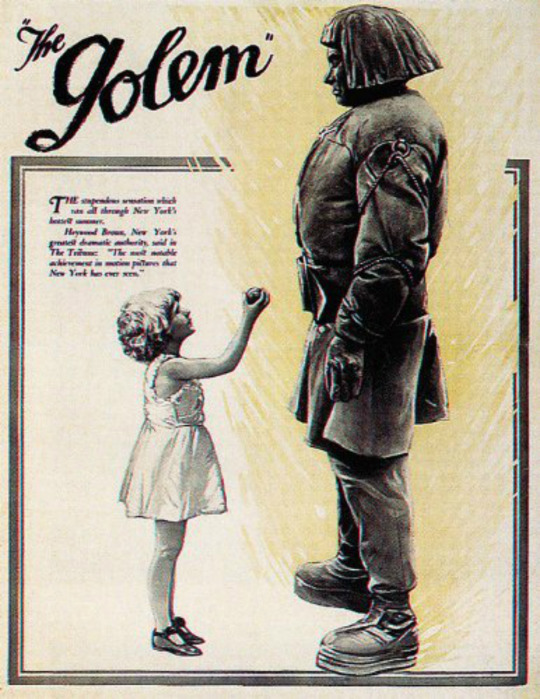
Though THE GOLEM: HOW HE CAME INTO THE WORLD represents an important beat in the development of German expressionist cinema, and any self-respecting nerd has seen plenty of beguiling stills from it, not as many people know it well enough to discuss it on the level that NOSFERATU or THE CABINET OF DR. CALIGARI enjoy. This is surely relatable to availability issues—in fact, the film is part of a trilogy, along with 1915's THE GOLEM and the 1917's THE GOLEM AND THE DANCING GIRL (apparently a primordial example of a horror-comedy!), but these other two are lost to time. The 1920 release, which I'll call DER GOLEM for convenience's sake, is the result of director and star Paul Wegener's desire to update his first effort, which was compromised by a number of disappointing production problems. So, it seems that if we can only have one of his Golem movies, it may as well be this one.
DER GOLEM is the collaboration of writer-director Wegener, his co-writer Henrik Galeen (see also: NOSFERATU), and his co-director Carl Boese, who I assume was especially necessary as Wegener himself plays the title role. The film is adapted from a novel by Austrian author Gustav Myer, which is further based on a Jewish folk tale, and it is interesting to see how this Germanic creative team express their impressions of the history of Jewish persecution. Some critics have found antisemitic underpinnings in the film, largely due to the (delightfully) frightening depiction of the esoteric practice that activates the Golem (which may have a deeper meaning than is immediately apparent), but that would be throwing the baby out with the bathwater. Despite the film being rather brief and broad, it is full of complex, sympathetic characters who transform significantly as the narrative unspools.
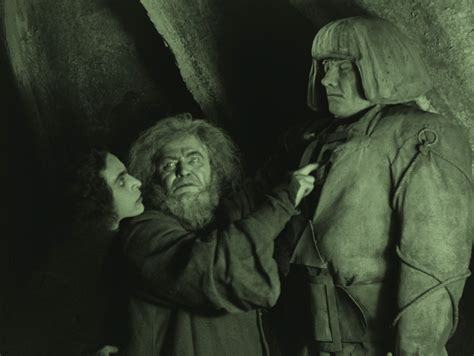
The story takes place in the Jewish ghetto of medieval Prague, where the venerable Rabbi Loew (Albert Steinrück) reads a warning in the stars predicting an imminent danger to his people. Sure enough, an edict comes down from the Holy Roman Emperor (Otto Gebühr) condemning the Jews for their evil character, and ordering their expulsion from the region. Loew creates a hulking clay protector who is brought to life by a sacred word hidden in a star-shaped talisman lodged in his chest, and thinks to impress and entertain the Emperor with his abilities in order to ameliorate the situation. The Golem makes a big splash in the Emperor's court, but the Rabbi's other demonstration doesn't go so well; he implores his audience not to laugh or speak during a magical cinematic projection of the history of the Jewish people, but they can't contain themselves, and the palace begins to crumble. When they are saved by the Golem, the Emperor gratefully rescinds his edict.
Now, this may be enormously crass of me, but I really, deeply think it would be incredibly great if Alamo Drafthouse made one of their pre-show warnings out of this scene. DON'T TALK. DON'T TEXT. OR THE GOLEM WON'T SAVE YOU FROM THE SUPERNATURAL DESTRUCTION OF YOUR EMPIRE.

The other thing I'd like to casually note about this first section, just because it's something I happen to know a little bit about, is that Rabbi Loew's invocation of the goetic demon Astaroth is not really equatable with the idea of devil worship that some viewers have extracted from this—which is fair, because this isn't easy to understand, nor is it readily accessible information. But (and I'm speaking very colloquially here) Astaroth is said to have mastery over esoteric knowledge, and one would work with him in order to gain more occult (for lack of a better word) enlightenment; so, it makes sense that he gives Rabbi Loew the sacred animating word. The other thing about working with demons is that they represent some set of what are usually considered to be negative characteristics: say, slander, wrath, vengeance, etc. So you might work with one of them to deflect these archetypal energies if they are directed at you by someone else. But, you'll also want to be prepared to address these elements in a mature and intelligent way, lest you be overtaken by them yourself. The final effect would be that you've learned an important lesson, and can't be harmed or dominated by whatever malefic characteristic you're dealing with.
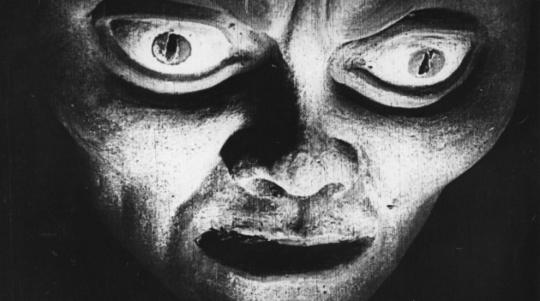
Once the Golem has served its purpose in averting the persecution of the Jews, Loew receives a warning that Astaroth may take it over and use it for vengeful violence. Loew wisely deactivates the creature, but while he goes out to join in communal celebrations, his Assistant makes a big mistake. (The Assistant is played by Ernst Deutsch, a Jewish actor and athlete who I just saw a couple days ago in ISLE OF THE DEAD! I didn't make a note of his wonderful performance as the gently cynical doctor in that film, and now I'm sorry about it) He has fallen in love with the Rabbi's daughter Miriam, and is appalled when he discovers her affair with the Emperor's arrogant squire Florian (Lothar Müthel). The Assistant sets the Golem on Florian, but of course the situation spins out of control, forcing Rabbi Loew to save the community once again.
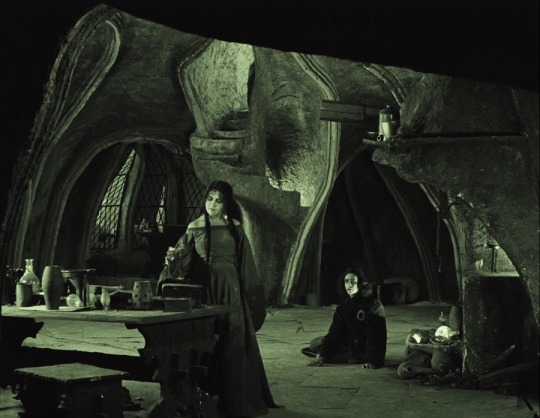
The Golem is an obvious ancestor of Frankenstein's monster, and his misadventure is startlingly similar to that of the better-known creature. Paul Wegener's expressive performance evokes the same range of anger, fear, and naive desire, and his moving interaction with an innocent child is abundantly familiar. In general, DER GOLEM is competitive with FRANKENSTEIN in its emotional complexity; even its villains are tragically human, driven at first by selfish compulsions, but faced with the consequences of their actions, they are sincerely penitent. Even the basics of antisemitism are addressed handily in the film, as the Jews' spartan existence in the ghetto, where their greatest treasures are their traditions and sense of community, flies in the face of the Emperor's accusation that they are avaricious and materialistic. (This coming down from a man bedecked in finery sitting on a gleaming throne, naturally)
The principle gift of DER GOLEM is its advanced aesthetics, owing to the fine work of master cinematographer Karl Freund and architect Hans Poelzig. But the film is bigger than its contributions to film history, telling a sensitive tale that is still surprising in its depth and thoughtfulness. I was glad to see there are new blu ray releases of the film from the last few years, and I'm excited to get my hands on one.

#blogtober#blogtober 2022#golemania#the golem: how he came into the world#der golem: wie er in die Welt kam#paul wegener#carl boese#karl freund#henrik galeen#gustav myer#Albert Steinrück#Otto Gebühr#Ernst Deutsch#Lyda Salmonova#horror#folk horror#german expressionism#hans poelzig#supernatural#occult#esoterism#frankenstein#religion
8 notes
·
View notes
Text
So I need to talk about my "Caligari" interpretations in a long-form ADHD ramble
If you've seen my blog, you're probably aware I am Completely Normal about the 1920 film "The Cabinet of Dr. Caligari." And this is one of those films that has been analyzed to hell and back, so if you're a dork like me, you've probably heard these interpretations in some form or another before. But I really want to talk about the angle in which I see it, and I hope I can bring something new to the table here. Again, this is just my own interpretation, and if you interpret it differently, that's completely fine! I'd be curious to hear your comments though; I love discussing this film.
So the first thing about this film I want to point out is that to me, the main theme is trauma. (This will obviously be discussed at length in this post, so CW for themes of this and abuse, including in the psychological and sexual sense.) There's certainly something to be said in the parallels between the specific traumas of the postwar era and the plotline and characters, but I want to specifically talk about this theme from a psychological perspective, as opposed to a historical one. (If you're interested in some other analyses that go more in depth when it comes to the aftermath of WWI, I can recommend those in "The many faces of Weimar cinema: Rediscovering Germany's filmic legacy," edited by Christian Rogowski.)
So, one thing I noticed is especially prominent is the theme of projection. Francis, of course, is mentally insane, and casts his fellow inmates at the asylum in various roles in the story of the film. At the most obvious level, he is projecting his own psychological pain onto these other people, assigning them various roles that, outside his mind, they do not play, at least in the same way he envisions them. Like in his mind, Jane seems to show some attraction to Francis, but denies him, believing herself to be a queen unable to reciprocate his feelings. "Caligari" is the asylum director both inside and outside of Francis' mind, although outside of it, his intentions are left to interpretation, as opposed to being clearly malevolent. And like in Francis' mind, "Cesare" does not seem to possess any agency, but is decidedly less of a threat.
What's really interesting about the character of Cesare is that projection and trauma seem to take on multiple layers with him. Francis sees this "blank slate" character holding the flowers at the end as a threat, and within his mind, Cesare takes on a dual role of both an aggressor and a victim, both by the plot and by the way he's filmed. This can draw interpretive parallels in how some people who have experienced trauma may see themselves; both self-loathing and self-pity are common responses to surviving a traumatic event, particularly abuse (which Cesare is clearly implied to have undergone; Caligari's journals imply non-consensual experimentation to bring him to a state in which he is able to "commit acts abhorrent to him". Plus he literally keeps him in a box). When we find out that Caligari's goal of controlling him is to "become Caligari," it becomes clear that he is projecting his own desires onto Cesare, going as far as to rename him in order to suit his own desires and completely erase whatever identity he may have had. We never get to know "Cesare's" original name, adding to the idea that this character only exists to be a vessel for whatever Caligari (and by extension, Francis) needs him to be.
From another interpretive angle, we see an abusive homosocial relationship bordering on eroticism between him and Caligari, who, in addition to violating his body and mind by controlling him without his consent, frequently touches him while he's asleep, and feeds him in an unconscious state. He completely transforms him in order to suit his own desires, despite the fact that, according to his own journals, murder would be "abhorrent" to Cesare in a waking state. This method of complete control and obsession with "becoming Caligari" highlights an interesting aspect that can be interpreted from Caligari's character, which is insecurity, which he may deflect through dominance over others, whatever form it may take.
There's much to be said about the character of Caligari and insecurity, and surprisingly, I don't think I've seen this interpretation analyzed too often. When we first see him, Caligari is ridiculed by the town clerk, whom he later sends Cesare to kill. He maintains a degree of authority as the asylum director, wielding power over people who aren't in the mental capacity to oppose him (Cesare included). The idea of "becoming Caligari" may very well appeal to someone insecure with violent tendencies, as in this position, he has the power to kill anyone he wants, albeit indirectly, and through the use of controlling someone else. (Side note- I haven't been able to find if this was intentional or not, but with his hat on, Krauss' Caligari is pretty much exactly as tall as Veidt's Cesare. If it was intentional, this was a brilliant costume design choice, as it implies how desperate he is for complete control, to the point of pettiness.)
While much has been said about Caligari and authority, and what Francis' mental state implies on the matter, it should be said that the asylum director doesn't know what's going on in Francis' head, even when he says he knows how to "cure" him. This might also imply that even if he is a benevolent authority figure he's still at best incompetent when it comes to "curing" Francis, which I believe contradicts the interpretation that the film is pro-authority through use of the frame story.
Speaking of authority, many of the central characters are in paradoxical positions in which they simultaneously possess and lack it. While Francis imagines himself to be a rebel against authority (the director/Caligari), in his mind, he has the police and Jane's father on his side. Jane, meanwhile, imagines herself to be in a position of authority as a queen, but cannot "follow the path of her heart," and is in a primarily passive position in Francis' mind. Caligari must show deference to the town clerk, but even he is subject, ironically, to Cesare's ability to play that role. If he doesn't have a "Cesare," he can't "become Caligari," and therefore is dependent on him.
So, I haven't talked about Alan yet. What's interesting about Alan (if you don't watch the sinful dumpster fire that is the 2005 version) is that despite being the catalyst to the story and of extreme importance to Francis, we don't see him in the asylum at all. Some people interpret Alan as someone from Francis' past, even possibly someone he killed (leading Francis to the asylum in the first place), but I think Alan's innocence, death, and role as the catalyst of the story may lead him to be interpreted as a manifestation of Francis' own innocence before a traumatic event. Alan's questioning when he's going to die is often regarded as rather odd, but considering how traumatic events can sometimes be associated with flashbulb memories, Alan receiving a specific time of how long he has to live may line up with the concept of the specific details of this trauma being burned into Francis' mind. It's also interesting that Caligari/Cesare specifically target both Alan and Jane, the two people Francis cares about. However, in the asylum, it's revealed that Francis' close relationships with both Alan and Jane are not present; Jane, while perhaps confessing her love, rejects him, and Alan is nowhere to be seen.
The last thing I want to bring this tangent to is whatever was going on in the kidnapping scene. There's a lot of interpretations here too because it's not exactly clear what's going on here, but I have a few takes on it. So, the main interpretation I keep seeing is that Cesare doesn't kill Jane because he's romantically and/or sexually attracted to her, which opens up plenty of consequential interpretations assuming that's the case, particularly about him exerting sexual violence. To be honest, that interpretation doesn't sit right with me, considering how, as I said earlier, he himself seems to undergo something akin to sexual abuse, if not literally so. There can, of course, be interpretations of how the cycle of abuse may lead victims to perpetrate abuse themselves, and that Cesare himself was projecting his own trauma in this scene onto someone else who was as vulnerable as he was, but I think this scene can be interpreted in a number of different ways that don’t necessarily lead to this conclusion. For one, his refusal to kill Jane is the only time we see Cesare exhibit any form of free will or defiance. However, kidnapping her may not have been a conscious choice, as he startles when she wakes up; he may have had a moment approaching lucidity and was thrown back into a conditioned state. Either way, the most intriguing thing about this scene is that it demonstrated that, at least in Francis' mind, Cesare is capable of conscious thought and the ability to defy orders (as well as a basic understanding of mortality). This adds a degree of dimension to this otherwise extremely static character, signifying that, in the world of Francis' delusion, he could hypothetically recover from whatever state Caligari brought him into. I also feel that interpreting his refusal to kill as a conscious decision, rather than a biological impulse of attraction (that, granted, not all of us feel), allows for the potential of him to be an actual character with an identity, rather than just a vessel, is simply more intriguing, as it implies he would be capable of conscious thought and therefore character development. (I may also be projecting my dislike of the trope where sexual attraction makes one “human” as an asexual person, but I digress.) Furthermore, I also fond it interesting to interpret him as acting out of empathy; both he and Jane are primarily placed in passive roles, but are also punished by the narrative for attempting autonomy. Jane goes to investigate her father’s disappearance and take an active role in the story, which leads to her getting kidnapped, and Cesare is able to defy orders to the point of refusing to kill, but this results in him getting hunted down by a mob and collapsing- if not dead (Caligari doesn’t even check for a pulse when his body is brought in!), then unconscious, possibly from overexhaustion.
So, those are (most of) my thoughts. I have a lot more, but this post is long enough as it is. I'd be interested to hear your own!
#the cabinet of dr. caligari#film#analysis#film theory#criticism#if you've gotten this far thank you for indulging my brainworms
4 notes
·
View notes
Text
Curved LED Screen for My Singapore Crib? Here's the Lowdown!
You're thinking about snagging a curved LED screen for your Singapore apartment? Hold on a sec – curved LED screen in Singapore are hot right now, but are they the right fit for your home cinema dreams? Let's dive into the world of curved displays and see if they deserve a spot in your abode.

The Big Curve Appeal: Immersion Like Never Before
The most obvious perk of a curved LED screen is, well, the curve itself. Unlike their flat panel counterparts, curved displays wrap around your field of vision, creating a more immersive viewing experience. Imagine watching the latest blockbuster in Singapore – a curved LED screen pulls you right into the action, making you feel like you're part of the movie. It's pretty darn cool!
Curved LED screen benefits Singapore go beyond just movies. Gamers in Singapore, rejoice! The curved design enhances peripheral vision, giving you a better overall view of the game world. Those sneaky enemies won't stand a chance when you have a curved screen on your side!
Not All Curves Are Created Equal: Considering Size and Space
Now, before you rush out and buy the biggest, curviest screen you can find, there are a few things to consider. Curved LED screens come in various sizes, and Singapore apartments aren't exactly known for their expansive living rooms. LED display panels in Singapore need some breathing room to truly work their immersive magic. Sitting too close to a large curved screen can cause eye strain and make the curve feel overwhelming.
Here's a rule of thumb: the bigger the curve, the further you need to sit from the screen. Measure your viewing distance and research the recommended screen size for optimal viewing.
Content Considerations: Not Everything Loves a Curve
Curved screens are fantastic for movies and games, but what about everyday viewing? Standard TV shows and cable programs are filmed for flat screens, and watching them on a curved display can create a distorted viewing experience. The edges might appear stretched, and the overall picture might feel "off."
Another thing to keep in mind is content source. If you primarily stream content from your phone or laptop, a curved screen might not be the best choice. The curve is designed to enhance a wider viewing angle, which isn't as beneficial for watching shows on a smaller device.
So, Curved or Flat? Weighing Your Options
Ultimately, the decision between a curved and flat LED display panel Singapore boils down to your viewing habits and living space. If you're a movie buff or a hardcore gamer with ample room for a larger screen, a curved LED screen could be the immersive upgrade you've been dreaming of.
However, if you have a smaller space or prioritize watching standard TV shows and programs, a high-quality flat screen might be a more practical choice. No matter which path you choose, Singapore offers a fantastic selection of LED display panels, so you're sure to find the perfect fit for your home entertainment needs!
Alright, so you've decided a curved LED screen is the way to go for your Singapore home cinema! Here are some pointers to make sure you snag the perfect one:
Resolution Rules: Don't settle for anything less than Full HD (1920 x 1080 resolution) for a truly immersive experience. If your budget allows, consider 4K (3840 x 2160 resolution) for stunning clarity, especially on larger screens.
Panel Power: There are two main panel technologies for curved LED screens in Singapore: VA (Vertical Alignment) and OLED (Organic Light-Emitting Diode). VA panels offer excellent contrast and deep blacks, while OLED provides superior viewing angles and richer colors. Consider your priorities when making your choice.
Curve Comfort: Remember, screen size and curvature go hand-in-hand. Visit a local electronics store in Singapore and try sitting at different curved screens to see which size feels most comfortable for your viewing distance.
Warranty Woes: As with any electronics purchase, a solid warranty is crucial. Make sure the curved LED screen you choose comes with a comprehensive warranty from a reputable seller in Singapore.
Bonus Tip: Embrace the Tech!
Once you've got your curved LED screen all set up, explore the features! Many curved screens in Singapore offer built-in smart functionalities, allowing you to stream your favorite shows and movies directly from the display. They might also have cool features like ambient lighting that syncs with the on-screen content, creating a truly immersive atmosphere.
So, there you have it! With a little research and these handy tips, you'll be well on your way to enjoying the magic of a curved LED screen in your Singapore home cinema. Happy viewing!
0 notes
Text
Back From The Dead: How Monster Films Still Exist in Cinema Today
Many things remain from cinema’s past that exist in Hollywood today, one of those being the use of “monsters.” More specifically the use of “monster” characters that are actually manifestations of issues that a film’s characters are facing or that follow misunderstood “monster” characters who are oppressed by society.
During the 1920s-30s, many classics were produced creating what is known as the Golden Age of horror. For Universal Studios, many of these greatest success films featured dark themes, murders, and monsters, releasing horror films that paved the way for how monsters would act and look in horror films. After the success of Dracula (1931), arguably the first American horror movie from the talkies era, Universal saw their opportunity to take over the monster film business and make frightening movies that scared and excited audiences. Universal’s film Frankenstein (1931) was monumental in establishing the genre of horror films and monsters in Hollywood during the Hays Code. The film’s monster Adam became a sort of icon of American individualism, due to being misunderstood and an outcast. This fueled many films made by Universal where a misunderstood monster experiences oppression from society, drawing in many studio talents for future movies and stories similar to it.

In Andy Smith’s So Why Shouldn’t I Write of Monsters?, he claims that “The social context of Whale’s Frankenstein films, and of the Universal production output during the 1930s in general, cannot be underestimated. David J. Skal writes that Frankenstein’s monster was ‘like a battered hood ornament for a wrecked economy’(Skal, 1992: 132).” (Smith 22). The sequel Bride of Frankenstein (1935) took this message of oppression and repression further by adding a woman as an element, since women are fundementaly oppressed and sexualized by society. This made the Bride the “Other” a common trope in horror films known as the “Return of the Repressed and the Other.” Though the Bride didn't have much screen time, her presence and rejection of Adam proved the female struggle and expectations of beauty even, since she is stitched up and was made for a man’s liking. Elizabeth Young also uses Bride of Frankenstein as a way of analyzing social attitudes to race and gender in 1930s America in her essay ‘Here Comes the Bride: Wedding, Gender and Race in Bride of Frankenstein’, a text I shall be returning to later as it offers cogent arguments in the way systems of repression are encoded, subverted and reinforced in Whale’s films'' (Smith, 22). In general, both film’s striking visuals and dramatic themes had a lasting influence on the entire horror genre and monster characterization in film for years to come.
Similarly, Cat People (1942) produced by RKO Radio Pictures by Val Lewton, has this similar trope of misunderstood “monsters.” RKO Radio Pictures is remembered for its low-budget psychological horror films that address moral dilemmas and combine them with supernatural elements. In Cat People (1942), Irena is hiding an evil cat inside her that she is fighting to keep at bay. She is fearful the “cat” will release if she is intimate with her husband, that “cat” she turns into is a manifestation of her fear of the unknown, fear of intimacy, and the internal fear/struggle to control her inner demons. Society also had an important part in the theme of oppression and repression in the film. Society oppresses Irena by making her repress her true self, especially when Dr. Judd tells her that her feelings are invalid. This example shows another theme of how women’s feelings are often overlooked and pushed to the side in society.
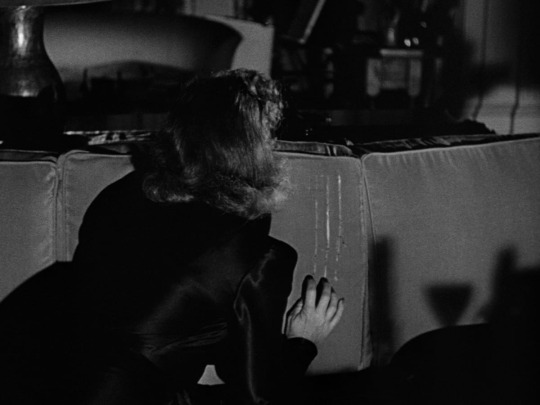
In his journal, Relocating Lewton: Cultural Distinctions, Critical Reception, and the Val Lewton Horror Films, author Mark Jancovich states, “The distinction of Lewton’s films is further emphasized by their supposed prescience: if, as Wood maintained, they ‘seem to have had little direct influence on” the ‘evolution’ of the horror film, this was supposedly due to the ways in which they ‘strikingly anticipate, by at least two decades, some of the features of the modern horror film’ (Wood, Hollywood 85). Similarly, Gifford has referred to Cat People (1942) as ‘a minor masterpiece that changed the face of horror films’ (161), and Frank has claimed that the Lewton productions were ‘the most powerful influence in horror films during the 1940s’ (42).” (Jancovich, 21-22). This film is driven by Irena’s psychological struggles and internal conflicts which is symbolized by the “monster” she hides inside her. The theme of superstition also plays a huge element in this film which is emphasized through their atmospheric and moody settings, and the use of shadows, lighting, and sound design to create a sense of tension and unease. The performances from the actors were also intriguing and believable on such a low budget, giving RKO more praise in the horror genre.
Looking at Hollywood today, there are many films that are similar to those produced by Universal and RKO during the 1930s-40s. Similar to Universal’s monster, Barbarian (2022) is a film whose “monster” is a creation of years of inscent that presents itself as a creepy killing monster in the basement of a house. However, she is actually a mother who is misunderstood, lonely, and trying to survive/escape from the confides of society, which relates to Frankenstein (1931) and Bride of Frankenstein (1935) misunderstood monster characters. For a film where the monster is a manifestation of issues a character faces, like in Cat People (1942), there is It Follows (2014) whose “monster” is representative of the AIDS pandemic and how once it is transferred to you, you are haunted by it and can never get rid of it. The monster is a manifestation of internal struggle and repression, like Cat People's (1942) manifestation of becoming a cat, and also relates to the sexual themes of the film. Overall, many elements of cinema created in the past still remains today, especially the genre of horror films and the exploration of deeper, themes and messages through a “monster” character.
Work Cited
Smith, Andy W. “‘So Why Shouldn’t I Write of Monsters?’: Defining Monstrosity in Universal’s Horror Films.” Gothic Film: An Edinburgh Companion, edited by Richard J. Hand and Jay McRoy, Edinburgh University Press, 2020, pp. 21–36. JSTOR, http://www.jstor.org/stable/10.3366/j.ctv10kmdxf.7. Accessed 5 Oct. 2023.
Jancovich, Mark. “Relocating Lewton: Cultural Distinctions, Critical Reception, and the Val Lewton Horror Films.” Journal of Film and Video, vol. 64, no. 3, 2012, pp. 21–37. JSTOR, https://doi.org/10.5406/jfilmvideo.64.3.0021. Accessed 30 Nov. 2023.
0 notes
Text
Houston - The City With Something to Do For Everyone
Houston, the fourth-largest city in the United States, is a vibrant urban center with a diverse population. It's also home to some of the most interesting shops and restaurants in Texas. Whether you're looking for a new place to eat or trying to find something fun to do while visiting Houston, this guide will help!

River Oaks
River Oaks is a neighborhood in Houston, Texas that has long been known as one of the most affluent neighborhoods in the city. River Oaks homes are some of the most expensive to purchase and rent in the country, with an average home price of $1.4 million.
River Oaks is also home to many restaurants and shops that cater specifically to its well-to-do residents. The neighborhood boasts high-end establishments like Neiman Marcus, Saks Fifth Avenue, Whole Foods Market®, and Chanel Boutique at The Galleria® Mall – all within walking distance from each other!
For those looking for more than just shopping or eating out there's plenty more fun things to do at River Oaks Park which has hiking trails along Buffalo Bayou Park where you can enjoy views of downtown Houston skyline while hiking through lush green forest surrounding you on all sides. If your looking for some great exercise then try running along the trail which runs right by this beautiful park where anyone can come visit anytime they would like
Lakewood Church
Houston’s Lakewood Church, one of the largest churches in the United States, is located just outside of downtown Houston. Lakewood was established in 1959 by Bishop John Osteen and his wife Victoria. Today, their son Joel Osteen leads the church that has grown to be able to seat more than 16,000 people at once and attracts over 43 million viewers each month through telecasts at its satellite campuses across America.
You’ll find it hard to believe that this beautiful space was once a run-down theater until you see what it looks like now! Now you can attend services at Lakewood Church on Sundays or watch them on TV during their “Hour of Power” service every week day morning from 10AM to 11AM CST/11AM EST/8AM PST (check local listings).
Rice Village
Rice Village is a shopping and entertainment district in Houston, Texas. It is located near Rice University and includes over 50 shops and restaurants. As one of the city's top tourist attractions, Rice Village hosts many festivals throughout the year including the annual Art Car Parade. The area has been featured on several television shows including "Matlock", "Buffy the Vampire Slayer", "Friends" and has also served as a backdrop for movies such as "The Blind Side".
The area was developed in the 1920s by William Marsh Rice, the namesake of Rice University. It was designed to be a shopping and entertainment district for Houston's elite and included a movie theater (which later became an art house cinema), shops, restaurants and even a bowling alley.
Westmoreland Houston
Westmoreland Houston is a great choice for those who want to be close enough to the city but not so close that they can't escape the hustle and bustle. The neighborhood is located just west of downtown, making it both convenient and easy to access public transportation. You'll enjoy plenty of dining options here as well as some excellent shopping centers, which will make your day-to-day life in Westmoreland much easier.
And when you're ready to take a break from all that activity, there are plenty of parks available for you and your family members. Some have even been designated as dog parks—so if you're an animal lover like me, then you’ll especially love this area!
Levy Park
Houston has a variety of parks. One of the most popular is Levy Park. It's located in the Montrose neighborhood and is a great place to go for a walk, enjoy nature or host events like festivals and concerts.
It has plenty of space to host large groups of people and many amenities including basketball courts, an amphitheater with stage, playground equipment, picnic tables and benches. In addition to these things there are also tennis courts that can be used by anyone looking for some exercise on their way home from work or after school activities with friends!
Houston is a city that has something to do for everyone!
Houston is a city that has something to do for everyone! Whether you're looking for culture, nature or just some good old fashion fun, Houston has something in store for everyone. So whether it's shopping at River Oaks or relaxing by Lakewood Church; either way we hope this blog post gives you some insight into all that is Houston!
If you're involved in a car accident, you need to know what to do. If you've been injured and can't work, or if someone was killed in the accident, you need help. You don't have to struggle through it alone.

Auto accident attorney Houston: What is auto accident attorney Houston?
If you've been involved in a car accident, it's crucial that you know what to do. You need legal representation from a seasoned attorney who is familiar with the laws of your state and will fight for your rights. You need an auto accident attorney Houston who can help get the compensation you deserve for medical bills and other damages associated with the incident. Auto accident attorney Houston are highly skilled professionals who have experience handling these types of cases and know how to get results for their clients.
Rose Sanders Law Firm, PLLC
1 Greenway Plaza Suite 100, Houston, TX 77046
(713) 221-3773
https://www.rosesanderslaw.com/
0 notes
Note
Strange asks: 🌿🌲 🌸 🍯 🎬 🌃
🌿 — Would you prefer to visit the zoo or the botanical gardens?
The zoo! I looooove wild animals. Looking at them and drawing them in person is SO great. I tend to linger at the zoo longer than anyone else wants to.
Also, I'm allergic to nearly every flower except clover, so I enjoy the botanical gardens but I end up with puffy itchy eyes and a drippy nose by the end. :(
🌲 — Tell me about a happy childhood memory.
The one I was thinking of with the pine tree emoji was one of my very first memories. I was very small... under six years of age... and we were living in a very old termite-infested house, outside of which grew at least three big old long-needled pine trees. I would gather up those lovely long soft needles and form birds' nests out of them.
🌸 — What do you wear to feel Fancy™?
Blazers! Formal blazers, my absolute beloveds. Also a beautiful double-breasted... coat/sweater? which in my mind is similar. It's funny you gave me a flapper dress once, because much as I loved it, I actually dress more in the male 1920s style when I'm going for fancy.
🍯 — Do you have a favorite mug / jar / item of cookware?
YES! I have a fox mug with a fluffy white tail for a handle! I use it for hot chocolate, mostly.
🎬 — Do you have comfort movies / comfort shows?
Sort of! I don't re-watch shows much, but I'm fond of Star Trek: Deep Space Nine. Mom and I watched through all seven seasons of it together in the last years of my high school life. As far as movies... I really love WALL*E. It makes me so nostalgic and happy every time I see it.
🌃 — Tell me about a town or city that’s important to you.
I grew up in Pella, Iowa, which was settled by Dutch people a long time back and is Very, Very Dutch still. It's a thriving tourist town, especially during the week of Tulip Time, with lots of small local businesses that do quite nicely.

This picture isn't mine; it's from Tulip Time 2019, I believe. You can sort of see the architecture in the background; the whole town is like that. I just... I cannot emphasize too much how utterly beautiful the whole town is. Look it up. It's fantastic. Also, it's beautiful by city law; businesses can't build in Pella unless they agree to do Dutch-style architecture, meaning even the WalMarts and the Caseys have Dutch-style roofs. When we moved away from Pella I was quite saddened to learn that not all towns in America are so pretty!

This picture is inside of the Pella Public Library, where I used to spend a lot of time. Windmills are very important in Pella; we have a working grain windmill as well as several decorative ones all over town, and logos of local businesses often feature windmills.
Pella devotes a lot more resources to the arts than most towns. It has a community theatre, a gigantic well-funded library, a museum, a living-history village, an opera house AND a cinema AND a community center. It's fantastic.
I have a love-hate relationship with the culture of the town, though... it's very classist, somewhat racist, very conservative, VERY cliquish; if you haven't grown up there and known all the major families by heart, you're going to have an EXTREMELY hard time finding any sense of community there. The saying in Pella goes "If you're not Dutch, you're not much"... and my family is not Dutch. Also, I was homeschooled, and I had a sad kind of outsider experience of the Pella homeschool community.
So: it's complicated. I'll ramble about it for a long time, but it comes down to: the architecture and overall town design is wonderful, the arts and businesses thrive there, the people are difficult to get to know, and I had a difficult childhood there.
Thank you for the ask! :)
12 notes
·
View notes
Photo

One of my greatest inspirations when it comes to makeup is Pat McGrath, especially during the Dior/Galliano era. Aesthetically, I also love the 1920s - especially 1920s Hollywood - with its dramatic, stark and daring looks. As a film student, I can't help to wish for more of that in contemporary cinema. Anyway, lads, here's the photo.
#1920s makeup#pat mcgrath#self portrait#me#20s aesthetic#20s fashion#old hollywood#1920s hollywood#1920s photography#annabo
40 notes
·
View notes
Text
Favorite films discovered in 2020

Well, this year sucked. I did see some good movies though. Some even made after I was born!
Perfect Blue (dir. Satoshi Kon, 1997)

I watch a lot of thrillers and horror movies, but precious few actually unsettle me in any lasting way. This cannot be said of Perfect Blue, which gave me one of the most visceral cinematic experiences of my life. Beyond the brief flashes of bloodletting (you will never look at a screwdriver the same way again), the scariest thing about Perfect Blue might be how the protagonist has both her life and her sense of self threatened by the villains. The movie’s prescience regarding public persona is also incredibly eerie, especially in our age of social media. While anime is seen as a very niche interest (albeit one that has become more mainstream in recent years), I would highly recommend this movie to thriller fans, whether they typically watch anime or not. It’s right up there with the best of Hitchcock or De Palma.
The Good, the Bad, and the Ugly (dir. Sergio Leone, 1966)

Nothing is better than when an iconic movie lives up to the hype. Clint Eastwood, Eli Wallach, and Lee Van Cleef play off of one another perfectly. I was impressed by Wallach as Tuco in particular: his character initially seems like a one-dimensional greedy criminal, but the performance is packed with wonderful moments of humanity. Do I really need to say anything about the direction? Or about the wonderful storyline, which takes on an almost mythic feel in its grandeur? Or that soundtrack?
Die Niebelungen (both movies) (dir. Fritz Lang, 1924)

I did NOT expect to love these movies as much as I did. That they would be dazzlingly gorgeous I never doubted: the medieval world of the story is brought to vivid life through the geometrical mise en scene and detailed costuming. However, the plot itself is so, so riveting, never losing steam over the course of the four hours it takes to watch both movies. The first half is heroic fantasy; the second half involves a revenge plot of almost Shakespearean proportions. This might actually be my favorite silent Fritz Lang movie now.
Muppet Treasure Island (dir. Brian Henson, 1996)
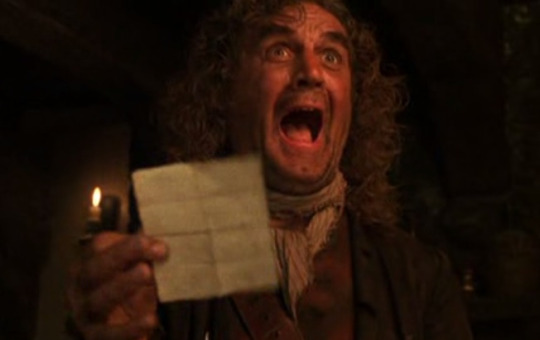
I understand that people have different tastes and all, but how does this movie have such a mixed reception? It’s absolutely hilarious. How could anybody get through the scene with “THA BLACK SPOT AGGHHHHHHH” and not declare this a masterpiece of comedy? And I risk being excommunicated from the Muppet fandom for saying it, but I like this one more than The Great Muppet Caper. It’s probably now my second favorite Muppet movie.
Belle de Jour (dir. Luis Bunuel, 1967)

I confess I’m not terribly fond of “but was it real???” movies. They tend to feel gimmicky more often than not. Belle de Jour is an exception. This is about more than a repressed housewife getting her kicks working as a daytime prostitute. The film delves into victim blaming, trauma, class, and identity-- sure, this sounds academic and dry when I put it that way, but what I’m trying to say is that these are very complicated characters and the blurring of fantasy and reality becomes thought-provoking rather than trite due to that complexity.
Secondhand Lions (dir. Tim McCanlies, 2003)
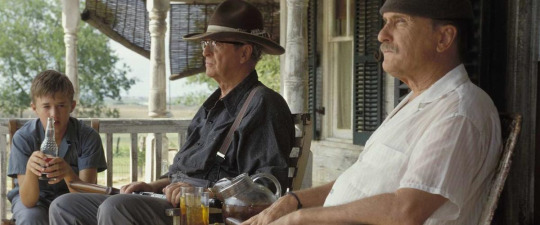
The term “family movie” is often used as a synonym for “children’s movie.” However, there is an important distinction: children’s movies only appeal to kids, while family movies retain their appeal as one grows up. Secondhand Lions is perhaps a perfect family movie, with a great deal more nuance than one might expect regarding the need for storytelling and its purpose in creating meaning for one’s life. It’s also amazingly cast: Haley Joel Osment is excellent as the juvenile lead, and Michael Caine and Robert Duvall steal the show as Osment’s eccentric uncles.
The Pawnbroker (dir. Sidney Lumet, 1964)

Controversial in its day for depicting frontal nudity, The Pawnbroker shocks today for different reasons. As the top review of the film on IMDB says, we’re used to victims of great atrocities being presented as sympathetic, good people in fiction. Here, Rod Steiger’s Sol Nazerman subverts such a trope: his suffering at the hands of the Nazis has made him a hard, closed-off person, dismissive of his second wife (herself also a survivor of the Holocaust), cold to his friendly assistant, and bitter towards himself. The movie follows Nazerman’s postwar life, vividly presenting his inner pain in a way that is almost too much to bear. Gotta say, Steiger gives one of the best performances I have ever seen in a movie here: he’s so three-dimensional and complex. The emotions on his face are registered with Falconetti-level brilliance.
The Apartment (dir. Billy Wilder, 1960)
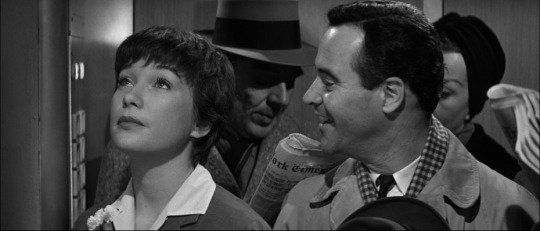
While not the most depressing Christmas movie ever, The Apartment certainly puts a good injection of cynicism into the season. I have rarely seen a movie so adept at blending comedy, romance, and satire without feeling tone-deaf. There are a lot of things to praise about The Apartment, but I want to give a special shoutout to the dialogue. “Witty” dialogue that sounds natural is hard to come by-- so often, it just feels smart-assy and strained. Not here.
Anatomy of a Murder (dir. Otto Preminger, 1959)
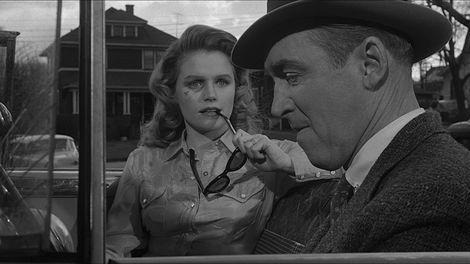
I’m not big into courtroom dramas, but Anatomy of a Murder is a big exception. Its morally ambiguous characters elevate it from being a mere “whodunit” (or I guess in the case of this movie, “whydunit”), because if there’s something you’re not going to get with this movie, it’s a clear answer as to what happened on the night of the crime. Jimmy Stewart gives one of his least characteristic performances as the cynical lawyer, and is absolutely brilliant.
Oldboy (dir. Park Chan-Wook, 2003)

Oldboy reminded me a great deal of John Webster’s 17th century tragedy The Duchess of Malfi. Both are gruesome, frightening, and heartbreaking works of art, straddling the line between sensationalism and intelligence, proving the two are not mutually exclusive. It’s both entertaining and difficult to watch. The thought of revisiting it terrifies me but I feel there is so much more to appreciate about the sheer craft on display.
Family Plot (dir. Alfred Hitchcock, 1976)
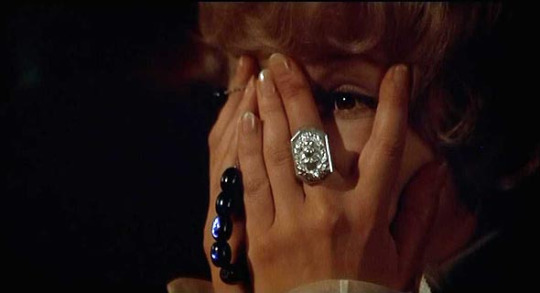
Family Plot is an enjoyable comedy; you guys are just mean. I know in an ideal world, Hitchcock’s swan song would be a great thriller masterpiece in the vein of Vertigo or Psycho. Family Plot is instead a silly send-up of Hitchcock’s favorite tropes, lampooning everything from the dangerous blonde archetype (with not one but two characters) to complicated MacGuffin plots. You’ll probably demand my film buff card be revoked for my opinion, but to hell with it-- this is my favorite of Hitchcock’s post-Psycho movies.
My Best Girl (dir. Sam Taylor, 1927)
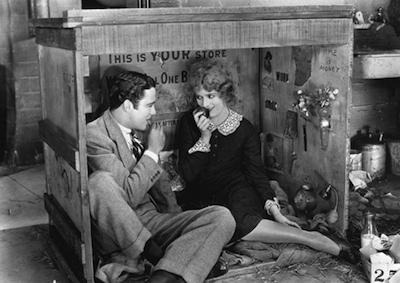
Mary Pickford’s farewell to silent film also happens to be among her best movies. It’s a simple, charming romantic comedy starring her future husband, Charles “Buddy” Rogers. Pickford also gets to play an adult character here, rather than the little girl parts her public demanded she essay even well into her thirties. She and Rogers are sweet together without being diabetes-inducing, and the comedy is often laugh out loud funny. It even mocks a few tropes that anyone who watches enough old movies will recognize and probably dislike-- such as “break his heart to save him!!” (my personal most loathed 1920s/1930s trope).
Parasite (dir. Bong Joon-ho, 2019)
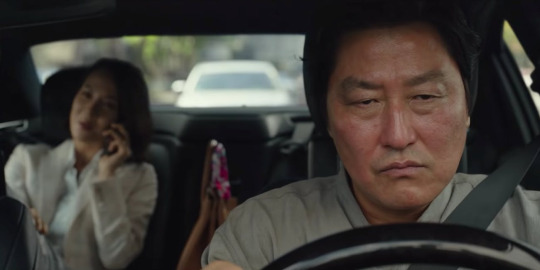
This feels like such a zeitgeist movie. It’s about the gap between the rich and the poor, it’s ironic, it’s depressing, it’s unpredictable as hell. I don’t like terms like “modern classic,” because by its very definition, a classic can only be deemed as such after a long passage of time, but I have a good feeling Parasite will be considered one of the definitive films of the 2010s in the years to come.
Indiscreet (dir. Stanley Donen, 1958)

Indiscreet often gets criticized for not being Notorious more or less, which is a shame. It’s not SUPPOSED to be-- it’s cinematic souffle and both Ingrid Bergman and Cary Grant elevate that light material with their perfect chemistry and comedic timing. It’s also refreshing to see a rom-com with characters over 40 as the leads-- and the movie does not try to make them seem younger or less mature, making the zany moments all the more hilarious. It’s worth seeing for Cary Grant’s jig (picture above) alone.
The Taking of Pelham One Two Three (dir. Joseph Sargent, 1974)

This movie embodies so much of what I love about 70s cinema: it’s gritty, irreverent, and hard-hitting. It’s both hilarious and suspenseful-- I was tense all throughout the run time. I heard there was a remake and it just seems... so, so pointless when you already have this gem perfect as it is.
They All Laughed (dir. Peter Bogdonavich, 1981)
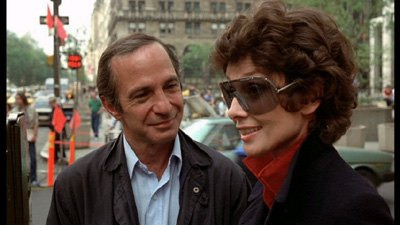
Bogdonavich’s lesser known homage to 1930s screwball comedy is also a weirdly autumnal movie. Among the last gasps of the New Hollywood movement, it is also marks the final time Audrey Hepburn would star in a theatrical release. The gentle comedy, excellent ensemble cast (John Ritter is the standout), and the mature but short-lived romance between Hepburn and Ben Gazarra’s characters make this a memorably bittersweet gem.
The Palm Beach Story (dir. Preston Sturges, 1942)

Absolutely hilarious. I was watching this with my parents in the room. My mom tends to like old movies while my dad doesn’t, but both of them were laughing aloud at this one. Not much else to say about it, other than I love Joel McCrea the more movies I see him in-- though it’s weird seeing him in comedies since I’m so used to him as a back-breaking man on the edge in The Most Dangerous Game!
Nothing Sacred (dir. William Wellman, 1937)

I tend to associate William Wellman with the pre-code era, so I’ve tried delving more into his post-code work. Nothing Sacred is easily my favorite of those films thus far, mainly for Carole Lombard but also because the story still feels pretty fresh due to the jabs it takes at celebrity worship and moral hypocrisy. For a satire, it’s still very warm towards its characters, even when they’re misbehaving or deluding themselves, so it’s oddly a feel-good film too.
Applause (dir. Rouben Mamoulian, 1929)

I love watching early sound movies, but my inner history nerd tends to enjoy them more than the part of me that, well, craves good, well-made movies. Most early sound films are pure awkward, but there’s always an exception and Applause is one of them. While the plot’s backstage melodrama is nothing special, the way the story is told is super sophisticated and expressive for this period of cinema history, and Helen Morgan makes the figure of the discarded burlesque queen seem truly human and tragic rather than merely sentimental.
Topaz (dir. Alfred Hitchcock, 1969)
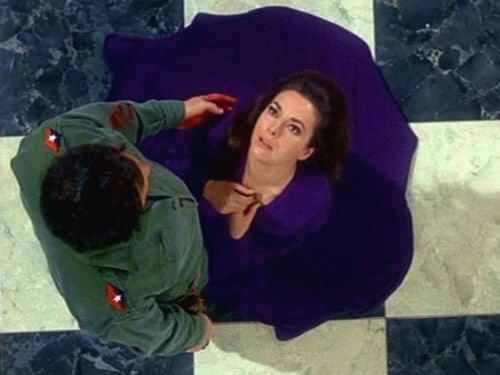
Another late Hitchcock everyone but me seems to hate. After suffering through Torn Curtain, I expected Hitchcock’s other cold war thriller was going to be dull as dishwater, but instead I found an understated espionage movie standing in stark contrast to the more popular spy movies of the period. It’ll never be top Hitchcock, of course-- still it was stylish and enjoyable, with some truly haunting moments. I think it deserves more appreciation than it’s been given.
What were your favorite cinematic discoveries in 2020?
#thoughts#belle de jour#topaz#family plot#the taking of pelham 123#the pawnbroker#nothing sacred#my best girl#applause#muppet treasure island#perfect blue#die niebelungen#parasite#the good the bad and the ugly#the palm beach story#they all laughed#indiscreet#oldboy#anatomy of a murder#the apartment#secondhand lions
155 notes
·
View notes
Note
So the primitive cinema VC was brilliant beyond words. You just cracked my skull open and made me think about images in an entirely new way. It left me with a couple questions- first, do you see a parallel between gifs and those early travelling theaters at fairs that would show people 10 second films? And do you think moving images have a greater or lesser meaning to people considering how overstimulated one is nowadays with visual content?
ayyyye! glad you learned something 💜
To the first question: gifs were something i thought about to include in the episode but decided not to bc those 10 sec films were a whole product like a vine or a tiktok. A gif is an excerpt from a video of some kind. and gifs are more interactive as like reactions etc than those films really were. So i would say no to being a parallel.
But i think what’s really productive about asking questions like this is that we can figure out what in the 20th century which might not have seemed important to 20th century filmmakers but is super relevant to us and tracing new histories. which is ultimately what the episode is about. Bc so much of the crisis around film dying is about losing what’s relevant to the 20th century (celluloid, theaters, feature length) but when you look closely there’s stuff from the birth of cinema that’s actually very relevant to us today. you just gotta shift your perspective a lil bit.
the second question is a bit more amorphous to answer. like to be clear these early films were considered like novel spectacles. some quick entertainment while already being out so films were very disposable. i think it’s 80% of films before 1920 are lost bc there was no thought to preserve such cheap entertainment. it’s only around the time of the industry coming into its own that we start seeing film as important (bc it took inspiration from theater and literature to seem so).
but i do think nowadays we’re so desensitized to not just moving images but even highway billboards and logos and anything visual. it might not register bc it’s so ubiquitous but conversely i think a lack of so many images would stand out like a sore thumb.
i will say that even as early as melies and the lumieres the craftsmanship of the image was taken very seriously. whereas now a lot of times as long as the shits in focus it’s “breaking new ground”
but i also think about the ease of self documentation now since like the late 70s. and how those images are really important to family historians. especially the amount generated today with iphones.
so idk idk idk but that’s for the questions & support! i really appreciate them 💜
8 notes
·
View notes
Text
National Heritage Week | Frank O’Connor – Librarian
by Jim McKeon
Writer, Frank O’Connor, was just twenty years of age when he was released from Gormanstown Interment Camp. Cork had been badly hit by the Civil War. It was still a smouldering ruin. Because the city and county had been the focal point of much of the bloodiest fighting the turmoil of the Civil War lingered there longer than it did elsewhere in the country. In the spring of 1924, the city was still edgy. O’Connor had no money and no job. Under the new government all teachers were required to learn the Irish language. For a few months he taught Irish to the teachers at the Protestant school in St Luke’s Cross, near his home. He was paid a few shillings a week for this. He struggled by, a twenty-year old in his father’s patched up, old hand-me-down trousers teaching middle-aged teachers how to speak the Irish language. It was frustrating, especially if you were on the losing side in the Civil War. MacCurtain and MacSwiney had tragically died but he still met Corkery and Seán O’Faoláin regularly. As so often before Daniel Corkery, forever in O’Connor’s background, stepped in and arranged an interview for a job. Cork dramatist, Lennox Robison, who was secretary of the Carnegie Library, was organising rural libraries and he was looking for young men and women to train as librarians. After a tough interview O’Connor got the job. His mother packed his little cardboard suitcase, including a big holy picture of the Sacred Heart, and he set off for Sligo.

Bust of Frank O’Connor - on display in the City Library, Grand Parade
At last he had enough books to read. Even for 1924, the wages were poor, thirty shillings a week. His lodgings were twenty-seven and sixpence. He had a half-crown (12.5 cent) left for cigarettes and drink. He posted his dirty laundry on to Cork every week. His mother washed it, with unconditional love, and posted it back, and sometimes included five shillings for her son. As a librarian he was all hands. His boss said he was untrainable. He kept busy by reading poetry books and getting them off by heart. He was blessed with a phenomenal memory. The only thing of note in Sligo was that he celebrated his twenty-first birthday far from home. After six months he was sent to Wicklow, where a new library was to be opened.
When he arrived a local priest wanted to close down the library. Lennox Robinson had just been heavily criticised and fired from his library position because of a controversial story he wrote about a pregnant girl who felt she had mysterious visit by the Holy Ghost. O’Connor’s boss was Geoffrey Phibbs, an influential fellow poet with controversial opinions on many aspects of life. The two young poets became great friends. Phibbs escorted O’Connor to Dublin and introduced him to Lady Gregory, George Russell (AE) and Yeats. AE was editor of the Irish Statesman and encouraged O’Connor to send him on something for publication. He sent a verse translation of Suibne Geilt Aspires and when AE published it 14 March 1924, it carried for the first time the pseudonym Frank O’Connor. It must be remembered that he was a young civil servant and he may have been contemplating on keeping his job by using a pen name ever since Lennox Robinson’s enforced resignation. He chose his confirmation name, Francis, and his mother’s maiden name, O’Connor. The prominence AE and the Irish Statesman gave him thrust him into literary view. Yeats had great time for O’Connor and said that he did for Ireland what Chekhov did for Russia. But the young librarian missed home and his mother. A vacancy came up in Cork. AE tried to talk him out of it and warned him he’d be miserable back in Cork. It never occurred to O’Connor that he would not return home. Like his father he was, at that stage, a one-town man..
Notwithstanding AE’s forebodings, he accepted the job of Cork’s first county librarian in December 1925. He was just twenty-two years of age. His salary of five pounds a week was more than anyone in Harrington’s Square had ever dreamed of earning. The library was at twenty-five Patrick Street which was still in the process of being rebuilt. Minnie was happy that her son was back home again and his father, Big Mick, was impressed that a pension went with his son’s new job. The city was still in a poor condition. The foundation of the Irish Free State in 1922 augured a period of new confidence in Cork. But in 1924 a public inquiry found:
…limited progress had been made on rebuilding Cork’s city centre since it had been burned down in 1920. Criticism was made of the poor quality of maintenance of the city streets, many of which were still paved with timber blocks. Part of Anderson’s Quay had fallen into the river. The public water supply was of poor quality…There was virtually no building in progress in the city.
In the burning of Cork not alone had many of the character and physical structures of the city been lost, but so also had thousands of jobs and many peoples’ homes. The Cork Examiner reported that thousands were rendered idle by the destruction. The rebuilding was tediously slow mainly because of the shortage of funding. Britain’s refusal to accept blame and pay compensation didn’t help. The Civil War itself and the post-war political divide were also major factors in delaying the building progress. This was another chapter in Frank O’Connor’s Cork, a damaged city struggling to survive. He opened his library over a shop near the corner of Winthrop Street. It was five years since the burning yet major buildings, just yards away, like Roches Stores and Cash & Co, were still rubble. Rebuilding had not yet started in these two well-known shops. In January 1927, Roches Stores finally re-opened for business. Summing up, the burning of Cork had a unifying effect on a people that had been collectively damaged by the event. It also exposed divisions in Cork society at the time. A Church/political divide came to the surface during this traumatic time. It was demonstrated through criticism by councillors of Bishop Coholan for his refusal to condemn the burning. Many republicans were unhappy because they felt the clerical comments were often selective. Frank O’Connor had a huge responsibility for a young and inexperienced man. He was given a cheque for three thousand pounds to set up and stock his library. He made his first mistake. At that time an anti-Catholic bias still lingered in commerce. He naively lodged the cheque in the nearby and more practical catholic bank when the accepted practice was to use the protestant bank. This innocent action caused a major committee dispute and O’Connor was accused of having a personal and ulterior motive. Then, when he insured the building, the insurance company gave him a cheque as a personal thank you. He didn’t want it and kept it for years but never cashed it. He sums up this whole chaotic scenario:
By the time the Cork County Council had done with organizing my sub-committee it consisted of a hundred and ten members, and anyone who has ever had to deal with a public body will realize the chaos this involved. Finally I managed to get my committee together in one of the large council rooms, and by a majority it approved my choice of bankers. There was, I admit, a great deal of heat. Some of the councillors felt I had acted in a very high-handed way, and one protested against my appearing in a green shirt – a thing which, he said, he would not tolerate from anybody.
When he finally got his stock of books together and organised his new library, he decided that he should have closer contact with the rural community. If they couldn’t come to him then he’d go to them. He bought a van, packed it with boxes of books, and drove all over the county. After six months this affected his health. He was exhausted from working long hours driving all over West Cork and he wrote almost every night. In a letter to old Wicklow colleague, Phibbs, he wrote, I’m working like a brute beast. He became ill and had to have a serious operation in the Bon Secours Hospital. He spent two weeks in hospital and six weeks convalescing. It shows his stubbornness when he shocked the nuns in the hospital by refusing to receive the sacraments before the operation.
Cork had a long tradition of theatre and a critical play-going audience, but in 1927 there was only one drama group in the city, the newly formed Cork Shakespearian Company. Daniel Corkery’s little theatre had closed in 1913 and groups like Munster Players, Leeside Players and Father Matthew Players were also defunct. On 8 August 1927 Micheál MacLiammoir and Hilton Edwards brought their touring company to Cork. They performed The High Steppers’in the Pavillion Theatre in Patrick Street. This venue later became a cinema and is presently HMV music shop. After the opening night there was a party at Seán and Geraldene Neeson’s home. Geraldene was Terence MacSwiney’s bridesmaid when he married in England. MacLiammoir encouraged O’Connor to revive drama in Cork. O’Connor was inspired and was instrumental in forming the Cork Drama League. Although he knew nothing about drama he threw himself headlong at the project. Old friend, Seán Hendrick, recalls:
That Michael knew nothing about producing plays and I knew nothing about stage-managing them did not trouble us at all…The producer was to be given a free hand in the choice of both plays and cast and members were bound to accept the parts allotted them. There were to be no stars and an all-round uniformity of performance was to be aimed at.
Undaunted, Frank O’Connor tore into their new venture. Lennox Robinson’s play, The Round Table, was to be the first production. It was its first appearance in Cork and there were some slight adjustments to suit the local audience. The curtain-raiser was Chekhov’s The Cherry Orchard. Typically, O’Connor wrote the programme notes, directed The Round Table, and appeared in both plays. The Round Table was a difficult play to produce. It had fourteen characters. Many of them doubled up and played two roles. They had trouble trying to cast the part of Daisy Drennan, but one night Geraldine Neeson brought along a pretty young girl to audition. Although she had a terrible stammer she was a natural actress. Not alone did she get the part but that night O’Connor walked her home. From then on Nancy McCarthy became his leading lady and for years to come she was to flit in and out of his life. The company’s first play opened on 28 February 1928 in Gregg Hall in the South Mall, a theatre venue no longer used in Cork. They got high praise all round especially Nancy McCarthy. They immediately started rehearsing for their second venture, The Cherry Orchard. Cork City was now back on its feet and completely rebuilt and people were getting used to a new freedom and sense of safety. Theatre was a hugely popular event. Plays at that time generally had an Irish theme and written by the likes of Yeats, Synge, Robinson and T. C. Murray. That had been the custom and they were very popular with Cork audiences. But the young Frank O’Connor had other ideas. He was into French and German and Russian theatre and he wanted to offer the Cork public something different.
English drama, no matter how significant it may be in its own setting can have no beneficial effect upon a country which is subjected to cultural influences only from one source. The Cork Drama League proposes to give the best of American and continental theatre, of Chekhov, of Martine Sierra, of Eugene O’Neill and those other dramatists whose work, as a result of the dominating influence of the English theatre, is quite unknown in Cork.
That was a more than subtle dig at Fr, O’Flynn, a local priest, who had founded the Cork Shakespearian Company in 1924. The two men did not get on. From 20 December to 30 December1927 they exchanged four letters in the Cork Examiner trading insults. Fr, O’Flynn signed his letters The Producer while O’Connor used his name in Irish. Seán Hendrick joined in the attack calling himself Spectator. Everyone in Cork knew who both men were. Ironically, they were more alike than they cared to admit; they were two proud Cork men, they both loved Shakespeare and they both loved Irish. Two more plays were produced, The Cherry Orchard and A Doll’s House. Both got fine reviews, but the audiences were poor. Maybe the Cork Drama League was going too far too soon, and Cork wasn’t ready for them. By now O’Connor was spending most of his time with Nancy McCarthy. Nancy was a religious girl from a well-known Cork family. He brought her home to see his mother and the couple went on a three-week holiday to Donegal. They stayed in houses three miles apart. They met every day for a year outside of St, Peter and Paul’s church after mass. They were engaged for a while but it did not work out. She would not marry him. He would not marry in a Catholic church and there was no way Nancy would marry outside the Church. She was one of ten siblings and he was an only child. She felt he was spoiled. This was quite true. By now he was being regularly published in the Irish Statesman. He had a poem dedicated to Nancy published 9 May 1928. The last two lines are filled with melodrama:
That even within this darkness of our body keeps
Communion with the brightness of a world we dream
Frank O’Connor was beginning to feel that AE was right. He should never have left Dublin. He was no longer enjoying his years in Cork. It was no longer the place he had known. O’Faoláin was in America and recently he had found it difficult to talk to Corkery. He made it plain that he was taking sides and that O’Connor was on the wrong side. O’Connor was restless and felt that Cork was threatening to suffocate him. He missed Wicklow where he could talk literature and art to Phibbs and go on to Dublin to meet AE and Yeats. AE would give him all the latest books and gossip, and Sunday evening he could go to the Abbey Theatre and see a series of continental plays, Chekhov, Strindberg and contemporary German plays. Eventually, getting frustrated with the parochialism of Cork and his lack of success with Nancy McCarthy, he applied for the job as municipal librarian in Ballsbridge. On Saturday 1 December 1928 he packed his case and left for Dublin. He still felt it was only a temporary move. Nothing could cure him of the notion that Cork needed him and he needed Cork. Nothing but death could ever cure him of this.

Jim McKeon’s book Frank O’Connor: A Life is available to borrow from Cork City Libraries
Jim McKeon has been involved in theatre all his life and has many film scripts, plays and books to his name. His best-known work is probably the biography of Frank O'Connor. He also toured Ireland and the US with his one-man-show on the writer's life. Jim is also an award-winning theatre director and poet.
2 notes
·
View notes
Note
[ if you're still accepting! C H W for Wenzel?
C - Wenzel is very willing to assist in granting aid or care to just about anyone, so long as they aren't willing to bring him any harm. Although he's not the best when it comes to dealing with the sick or injured, admittedly. He can barely take care of himself in such a state. He will provide a willing ear to listen, however, and occasionally offer odd but honest advice in times of need; ones that are only shrouded in paranoia most of the time.
H - Having lived in one building for the majority of his life, it's safe to say Wenzel doesn't really go out much. Or do much. Or know much. Especially not about the outside world or its inhabitants. Due to this, it would have been rather difficult for him to even explain what truly makes a hero to him, let alone label someone as such.
But after coming to the Constant? After being pulled from the prying eyes and deadly hands of the insufferable 'caregivers' who ruined his life? Perhaps he wouldn't instinctively call him a hero, but Maxwell was- and still is- his saving grace for getting him out of that terrible place.
Wenzel could never see himself as a hero, though. He tries to do the right thing- tries to help when he can- but heroes are... brave, aren't they? Strong? He doesn't really think he has many of the necessary traits to be someone like that for someone else.
W - Having spent the 1920s to the 1940s in the real world, the introduction of television was an astounding and revolutionary thing. The facility used to have one, and he'd steal glances at it all the time, watching with delight as the little moving pictures- both animated and photographed- danced across the screen. It was like magic to him. It gutted him deeply when the staff eventually needed to sell it after the repression hit... it'd been one of the few lights in his life for a long while.
Though it may not be what he most wants to see in life, Wenzel has always envied the doctors and staff who frequently mentioned the luxuries of the cinema... As a teenager, he so desperately wanted to experience what it was like to watch things on the big screen in a real theater.
#Wenzel (the Luckless)#ask#thank you for indulging me in him waa waaa 😳🥺 thank you for asking abt him💕
1 note
·
View note
Note
Hello!
I choose LXC because he is a good, kind man. He is strong, resilient, intelligent and respectful. He is everything that is right in this world, and I admire that!
I am staying safe, I hope you are too! It indeed is very hard to look for a job, but the course is giving me tips so I know I will get one eventually! Thank you for your well wishes ❤
I hope you will enjoy your break! I don't doubt it's deserved!
Personally, I loved Handsome Siblings! I watched it so I could hopefully learn some Chinese from it, and I didn't expect to become invested. I absolutely loved it and I binged the entire thing! I love the twins so much ;-; The love in the bond they share just makes me feel things hahahah
It's been an ok week so far! Fixed my sleeping pattern (that I will eventually mess up again) so I'm more productive! I hope you'll have a great week!
My question for today is: if you could recommend one show/movie in Chinese to me, which one would it be?
- Sincerely, your Classified Cultivator
hello! (≧∇≦)/ oh that’s nice! hopefully that course will have some good tips that will come in handy~ it sounds really intense tho (@_@;) I don’t remember going for any courses back in the day (ok this sounds ages ago but it was like... 2 years ago???) when I was still studying and/ or looking for a job... more like I was too lazy _(:3」∠)_
oh man maybe one day I would check it out! my watch queue is insanely long right now and I take really long for chinese and korean shows especially since they typically have a lot of episodes and very long episodes respectively ヘ(_ _ヘ) I usually finish uk/us shows and japanese anime much faster (ノ・o・)ノ since they have fewer episodes... aha
oh noooo please don’t mess up your sleeping pattern again (>△<Uu my brother’s is absolutely terrible (he goes to bed around 4 or 5am and only gets up at... noon??) and it seems really bad for health in general... I used to only sleep at 2am (remnants of my addiction to a mobile game sigh but that’s another story there) and get up around 9 or 10, but for the past couple of months I’ve been trying to change that and exercise more often (sometimes in the early morning if needed alksdlksdf) and my sleeping pattern feels much better now! ^^ and yes, totally understand on that more productive thing! it feels like right now I can get more things done in the morning, at least. hope it will last for you~ (b^_^)b
ahhhh only one show/ movie?!?!?! (゚Д゚;) hmmmmmMMMM......
eh well one of my all time favourite cdramas is my roommate is a detective, which is kinda like sherlock holmes. it’s set in the chinese republican era , and is centred around an ex-mafia-turned-police-inspector (acted by my tumblr url namesake) and a smartass-genius-rich-boy-eking-it-out-on-his-own and the crimes they solve together in 1920s shanghai. but since that’s pretty obvious from my tumblr in general, I’m gonna recommend another movie that I don’t think a lot of people here may be aware of but is still really good!
it’s this...

red cliff! it’s actually a super long show and got split into two separate movies, released in 2008 and 2009. I was like... 12 around then??? but I remember watching both parts in the cinema and going like...... wow
it’s a historical war epic, definitely not in the xianxia or wuxia genres that a lot of popular cdramas are in right now. and this is the one I would recommend because it’s based on an actual historical battle in ancient china AND is also one of the most famous arcs in one of the four Chinese Classical Novels (capitalising these here because this is a legit term ahahaa), the romance of the three kingdoms.
it’s somewhat like a david vs. goliath situation, and besides the super epic fight scenes, there are also a lot of clever strategies being thrown around and used, mostly by that guy from the second right up there called zhuge liang (or kong ming).
and some videos!
trailer in chinese:
youtube
and another trailer in english (UGH at that voiceover):
youtube
each part also has its own theme song! they’re both sung by the same singer (a lan) and they’re both equally pretty and haunting. my brother and I couldn’t get the second one in particular out of our head for a reaaaally long time because they kept repeating that melody (that appears at 1:33 in the mv) throughout part 2 lolol
theme song for part 1, called 心战 “heart war”
youtube
theme song for part 2, called 大江东去 “the mighty river* flows east”
*referring to the yangtze river, at one point of which the actual historical battle was fought
youtube
and yes! super long reply omg (*ノдノ) I think I just convinced myself to watch the movies again... aHAHA
12 notes
·
View notes
Text
Research: Storytelling project
JOCK
Mark Simpson, best known as Jock, is a Scottish comic book artist and illustrator. He began his career in 1999 working on the British comic book publisher 2000 AD (where most of the British artists and writers, began their career, before going to the major leagues like DC and Marvel), and started working with characters like the Judge Dredd.
The artist began his career in the USA with The Losers, at Vertigo (a subdivision of DC comics), and some issues of the Green Arrow.
He also have worked with conceptual arts for various films such as Iron man 3, X-men days of the future past, and Star Wars episode VIII.
I have known Jock for a while, I have seen many of his works in the comics, and he is known for working mainly with covers, where he does extremely surreal works, mixing various types of colors, and always uses a lot of shading, not worrying if the characters are in the correct proportion, because that is not his proposal.
But I know he did some works as a sequential artist, like The Losers, for example, where he makes extremely tight pictures, always focusing on the expressions of the characters, and especially on the hands that he most likes to do.
His storyboards or sketches are very different, because his drawings do not follow the traditional way of being centered on the pictures, many of his characters are jumping over the pictures, to show the size of the action scene that Jock wants to do.
It is worth remembering that he mixes his drawings made with pencil and nanquin, with digital, often taking pictures of different landscapes or scenarios, and drawing over them, and mixing with his drawn character to make an interesting composition.
Despite all this, he has a very peculiar style, which many people complain about the lack of movement and poses that his characters does. That his lines are also very dirty and dark. But Jock says, that this is his way of drawing, that he likes to have a not so commercial style, like many other artists. He likes to play with colors and likes to draw his characters, in a little more simple poses, and glorifying the background.
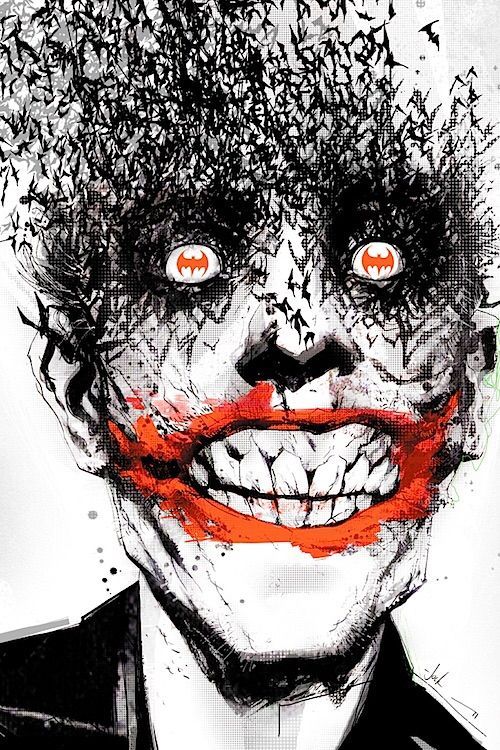


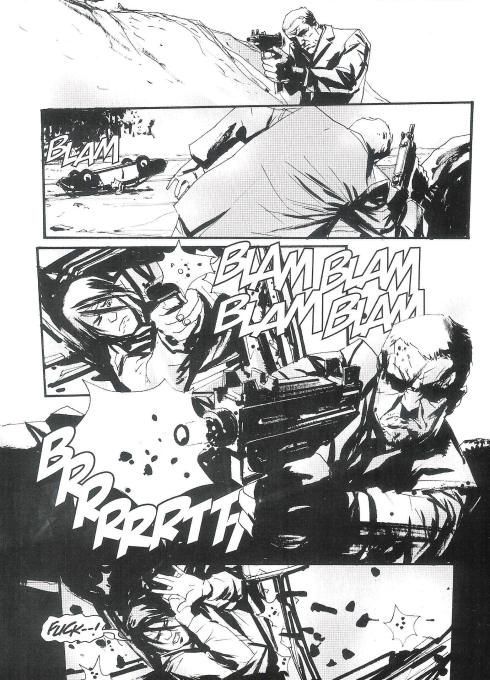
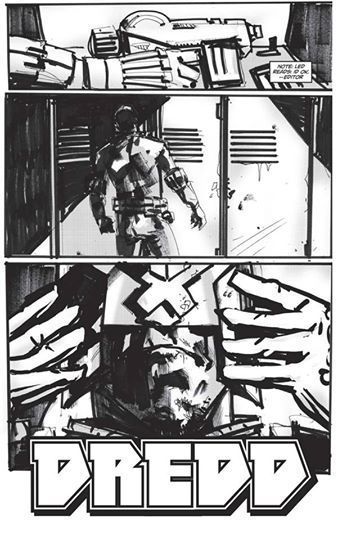
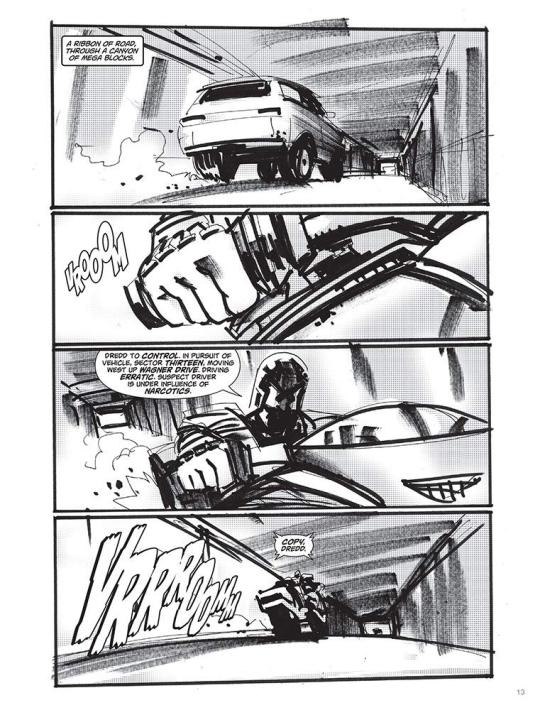
Saul Bass
Saul Bass was an American graphic designer and filmmaker, he’s known for designing movie posters and title sequences.
For 40th years, he worked with Hollywood greatest filmmakers, such as Stanley Kubrick, Alfred Hitchcock, Martin Scorsese and Billy Wilder.
Bass was born in New York in 1920, to a Jewish family, he was all ways drawing when he was a child.He graduated from James Monroe High school in the Bronx. He studied part time at art students league in Manhattan, and moved to Brooklyn College, where he had classes with György Kepes, a famous Hungarian painter and photographer.
He began in Hollywood in the 40’s, designing prints for films like champion (1949), death salesman (1951) and the moon is blue (1953).
He became widely known for creating the title sequence for Otto Preminger’s The man with the golden arm (1955), which’s about a jazz musician, addicted to heroin. Bass decided to create a poster which dialogues with the controversial subject, so he chosed the arm as the central object, as is a image which relates with heroin.
For Alfred Hitchcock, he provided memorable posters, like Vertigo(1958), North by Northwest(1959) and Psycho(1960).
For Martin Scorsese he had done the posters of The Goodfellas(1990), Cape Fear (1991), the Age of innocence (1993) and Casino (1995).
For Stanley Kubrick, he designed Spartacus (1960), and probably the best poster in his career, which is the poster from The Shining (1980).Kubrick, however, wasn’t amused. On the sketches themselves (which were later discovered in his personal affects) he wrote “Looks like science fiction.”Title looks small, looks like the ink didn’t take on the part that goes light,” and “Maze too abstract and too much emphasis on maze,” and, the most scathing of all, “Don’t like artwork.”
More discussions followed, and Bass agreed upon an illustrative approach of a large head peering through the title.As Kubrick instructed, the poster evokes both “terror” and the “supernatural.”
Bass once told,that his main goal for his titles sequences is “try to reach for a simple, visual phrase that tells you what the picture is all about and evokes the essence of the story".




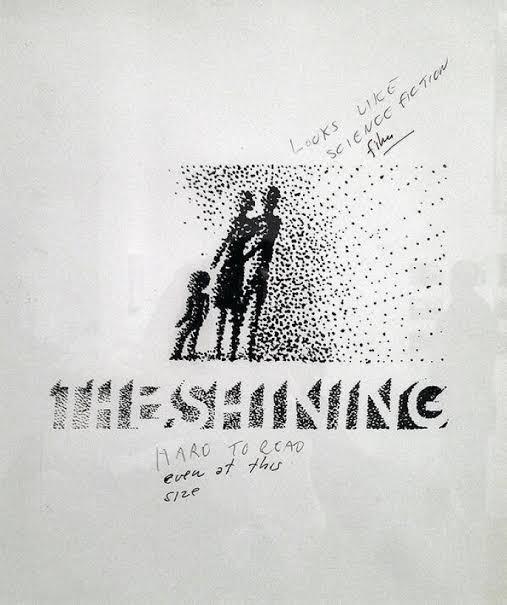
James Cameron
James Cameron is a famous film director, which is for having two of the greatest box office films of all time, which are Avatar and Titanic. In addition, he is always revolutionizing in special effects, always bringing something new and revolutionary, but it all starts on his drawing desk, with his sketches and storyboards.
James Cameron has always been known for creating extremely interesting worlds, and completely out of the ordinary. Starting with the film Aliens, the sequel to Ridely Scott's film, where he expanded this world by creating an ecosystem for the aliens, in addition to showing futuristic equipment, for the space army that faces the aliens.
He also created concepts, for the Terminator films 1 and 2, where it was an idea never before seen of a robot that travels in time to kill a person. Its detailed perfectly drawn storyboards show one of the most interesting scenes in the film, where the terminator does a self surgery, revealing his true form.
And finally, once again creating a whole world, with a fauna and flora never seen before in the movie Avatar.
Cameron always wanted to create worlds, so he putted everything on a piece of paper when he was a child, where later, he took courses of drawings and did art colleges, to get a clearer idea of how his worlds and characters could be.
Before being a director, he wanted to be a writer and an artist, but he never thought his ideals could be just in a book, he wanted to expand these ideas in a way never seen before.
Perhaps what impresses me most about James Cameron, besides being a creative force, is all the care he takes with his works, he said in an interview, which he always preserves all his storyboards, even from those films that he never made or did not work, and said that almost every day, he sits at his drawing desk and tries to come up with possible scenes for any film he is making. And when he creates an interesting scene, he tries to invent a whole story, to get to that specific scene.
https://issuu.com/dteditore/docs/spidercameron-screen-eng/1?ff
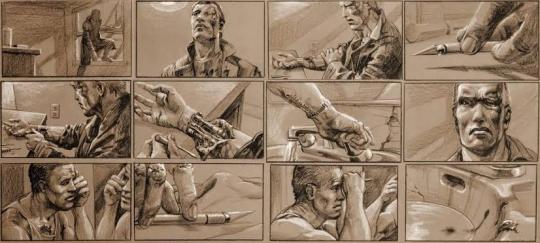

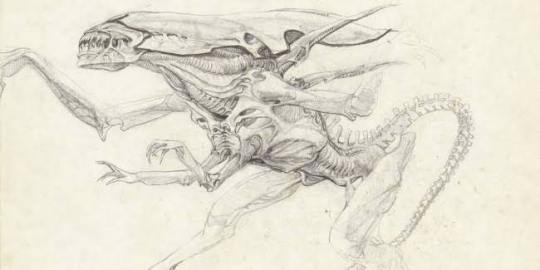
Glen Keane
Glen Keane was born on April 23, 1954, in the city of Philadelphia, United States. Early on, he became interested in art while watching his cartoonist father Bill Keane draw. After finishing high school, he turned down a scholarship to play football and signed up for CalArts- California Institute of Arts.
Keane signed up for the painting program, he wanted to be a visual artist. However, his application was accidentally sent to the animation department, then Film Graphics. The college vetoed him to change course, so he stayed there.
Glen’s passion for painting helped him tremendously in animation, since the first skill an animator must have is knowing how to draw. Do not simply draw, but really know anatomy and how to give the illusion of weight.
His first work was Bernardo and Bianca in the kangaroo land. In the following years Keane worked on other features such as the Hound and the fox, Oliver and his gang , treasure planet, and the list goes on.
But it’s was at the time called the Disney Renaissance that Keane stood out. He animated Ariel the little mermaid, Beast from the beauty and the beast, Aladdin, Pocahontas, Tarzan, and most recently, was Rapunzel (Tangled).
At the time, Keane and the animators, had to use the traditional animation (by using paper), so him and his crew had to plan, all the scenes and poses, by doing storyboards, and later drawing on the paper frame by frame (the frequency to project a film in the cinema is twenty four frames per second, twenty four drawings in total were needed for each second of animation seen on screen).
There is no professional on the animation field, who does not know the name Glen Keane. He is the reference to all of them. What sets him apart, is his passion for his characters. During the production of the animations, Keane understands them and is thus able to perform better.
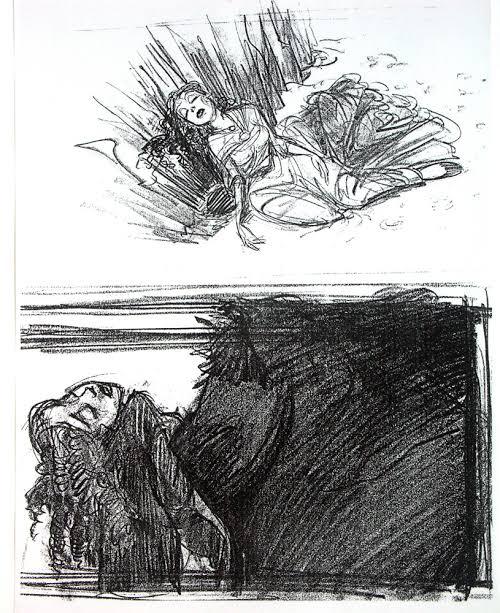
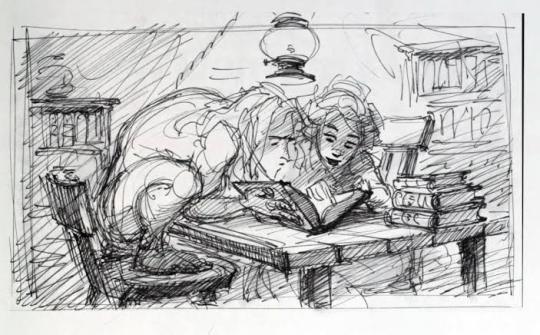

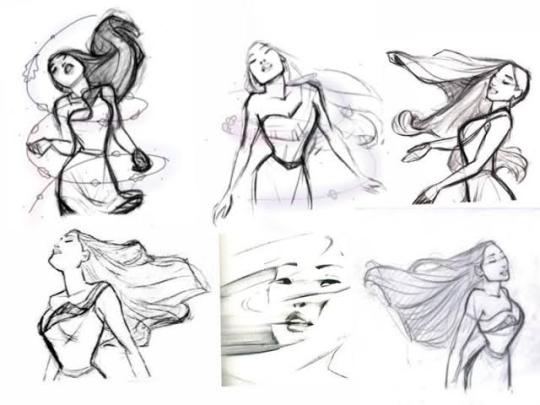

4 notes
·
View notes